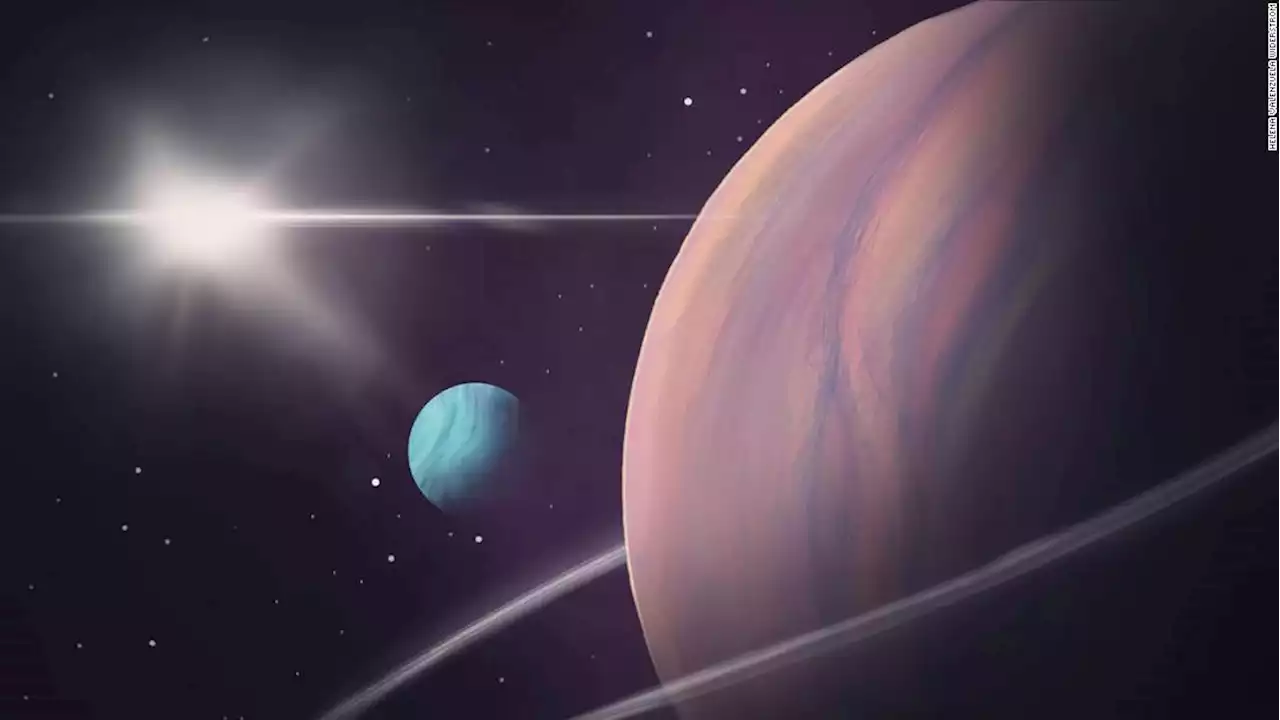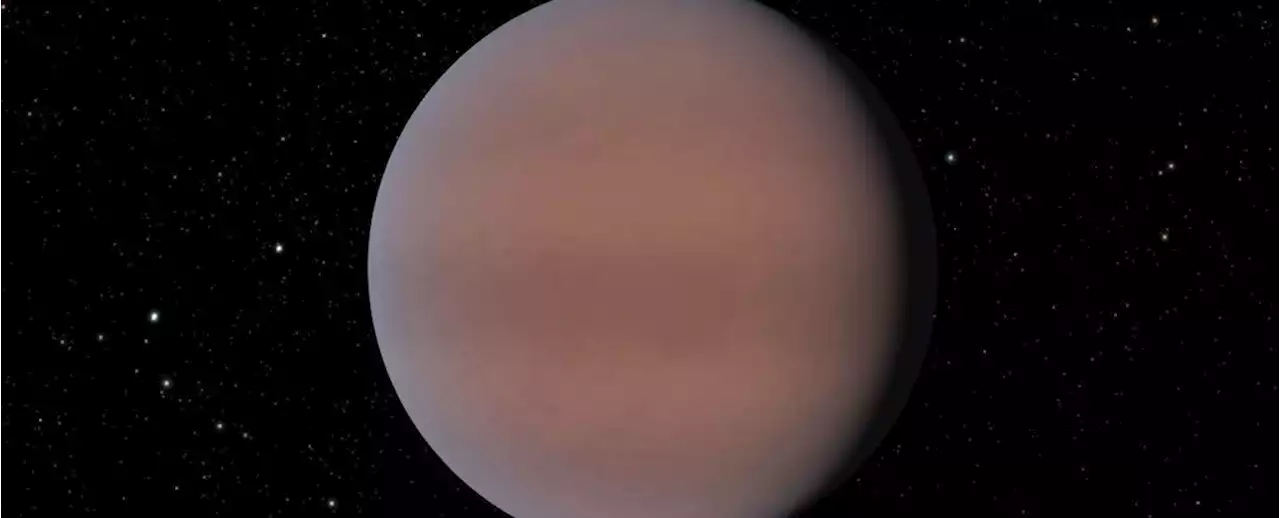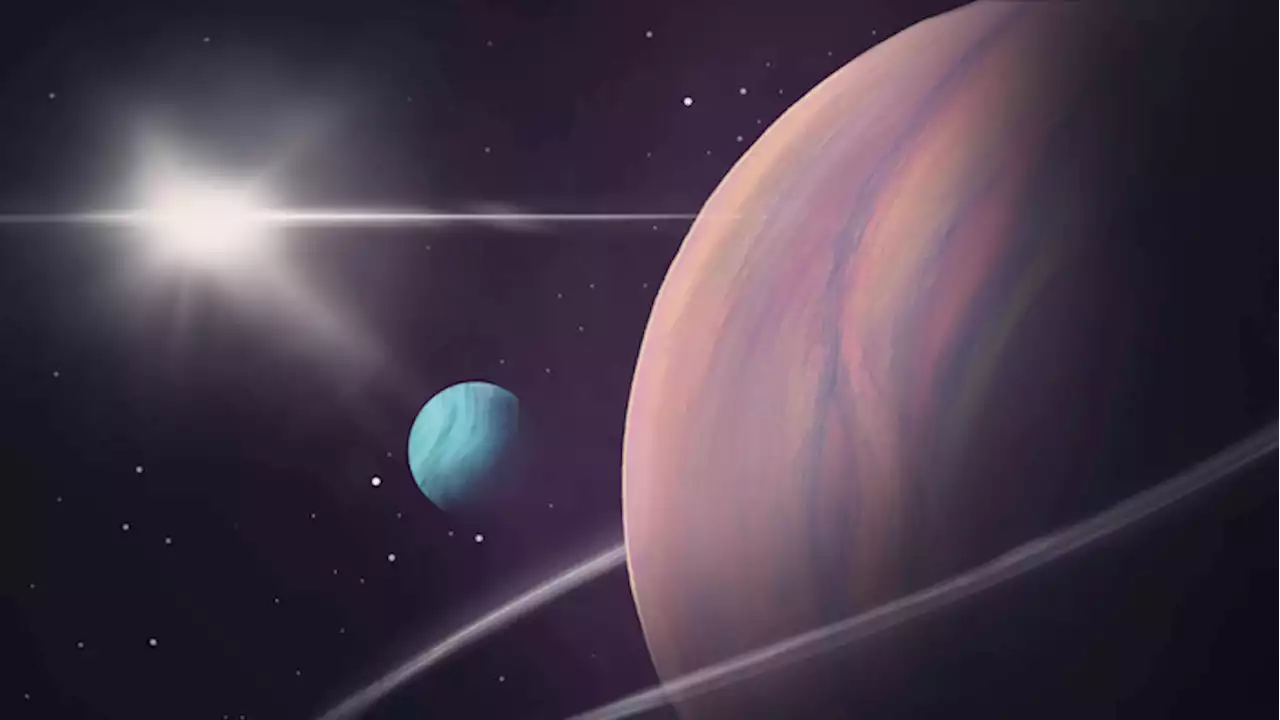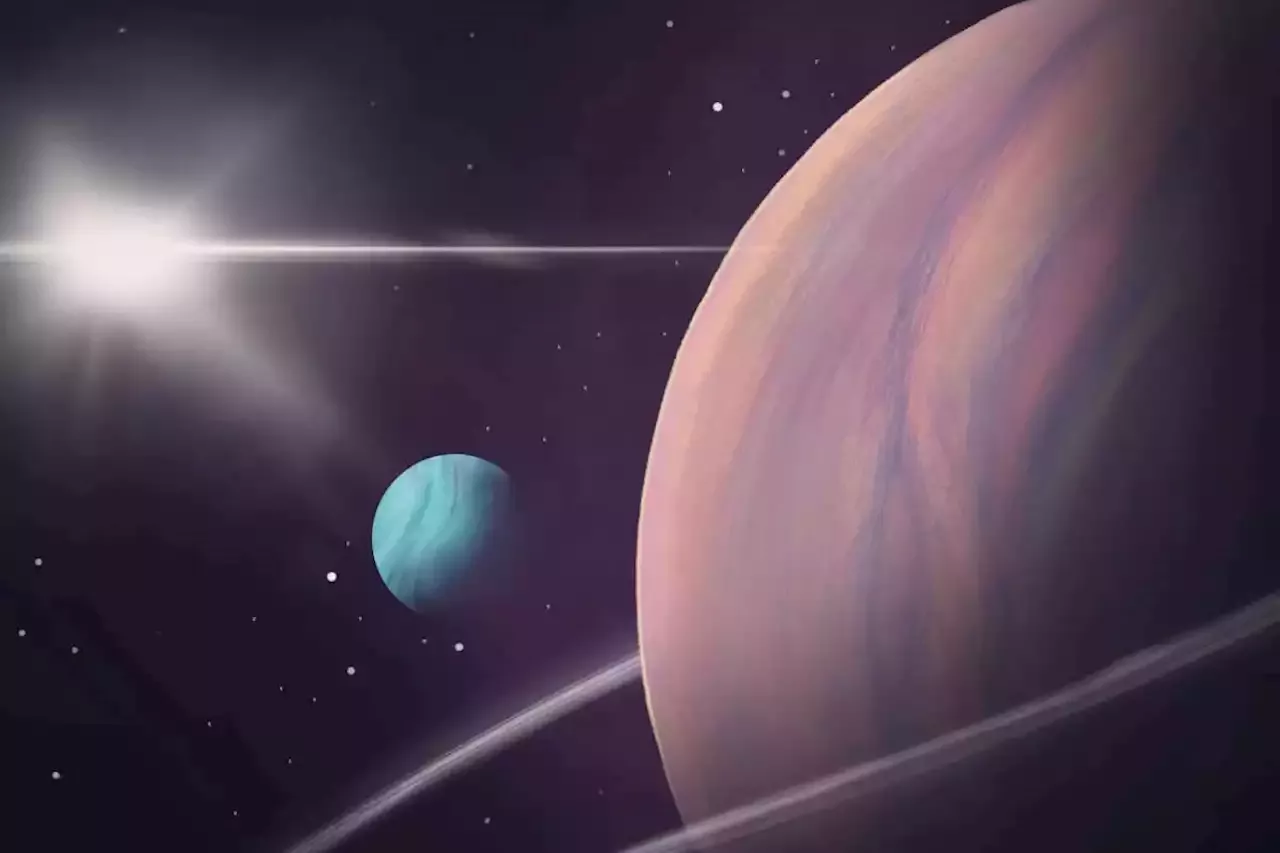A confident detection of a moon orbiting a planet beyond our solar system – called an exomoon – has eluded astronomers so far, but they have found a new candidate
at Columbia University in New York and his team. Out of a sample of about 300 planets, all observed by the Kepler space telescope, Kepler-1625b was most similar to Jupiter. “That’s kind of unusual, because Kepler has a strong bias toward looking at planets closer to the star, and Jupiter-sized planets are quite rare,” says Kipping.
So in the researchers’ next search through Kepler data, they focused on searching for moons orbiting Jupiter-like exoplanets – those at least half as big as Jupiter with relatively long orbital periods. They found 70 such worlds and sorted through them, looking for signs of exomoons.Kepler searches for planets by observing the light of stars. When a planet passes in front of its star, the light from the star dips, and this should happen at regular intervals as the planet orbits.
Of the 70 worlds, Kipping and his colleagues found three for which the starlight was a significantly better match to a model containing both a planet and a moon than a model containing just a planet. After digging more deeply, they attributed one of the signals to the effects of the telescope’s movement and another to, but the third stubbornly defied explanation by anything other than a moon.
“In the first two cases, we’re pretty sure they’re bogus, but for the last one we couldn’t kill this moon,” says Kipping. “We tried every technique we could imagine and we couldn’t get rid of it.” That third planet is called Kepler-1708b and the telescope observed it passing in front of its star twice, both with small extra dips in starlight that could be attributed to a moon.
Even with a potential moon of such a large size, the observations aren’t conclusive – usually astronomers prefer to have at least three dips in a star’s light, and we only have two for Kepler-1708b. Additionally, the star is relatively dim, so the signal isn’t particularly strong, says“Looking at the numbers, I would say it’s interesting, but it’s not a killing argument in favour of an exomoon,” says Heller. “I’m not convinced, not at all.
France Dernières Nouvelles, France Actualités
Similar News:Vous pouvez également lire des articles d'actualité similaires à celui-ci que nous avons collectés auprès d'autres sources d'information.
 Massive object could be an interstellar moon, a rare findAstronomers have discovered what may be a giant moon orbiting a Jupiter-size planet located 5,500 light-years from Earth. The moon is 2.6 times the size of Earth and is only the second candidate for what scientists call an exomoon, or a moon outside of our solar system.
Massive object could be an interstellar moon, a rare findAstronomers have discovered what may be a giant moon orbiting a Jupiter-size planet located 5,500 light-years from Earth. The moon is 2.6 times the size of Earth and is only the second candidate for what scientists call an exomoon, or a moon outside of our solar system.
Lire la suite »
 Astronomers Detect Water Vapor in The Atmosphere of a 'Super Neptune' ExoplanetNew Year's Day comes around once every 47.5 hours on the roughly Neptune-sized exoplanet TOI 674b, which makes it something of a rare creature.
Astronomers Detect Water Vapor in The Atmosphere of a 'Super Neptune' ExoplanetNew Year's Day comes around once every 47.5 hours on the roughly Neptune-sized exoplanet TOI 674b, which makes it something of a rare creature.
Lire la suite »
 Astronomers identified a second possible exomoonKepler 1708 b i, a newly discovered candidate for an exoplanet moon, has a radius about 2.6 times that of Earth, a new study suggests.
Astronomers identified a second possible exomoonKepler 1708 b i, a newly discovered candidate for an exoplanet moon, has a radius about 2.6 times that of Earth, a new study suggests.
Lire la suite »
 The hunt is on for exomoons around alien planets and scientists may have just found oneThe find, the second candidate for an exomoon, may be the next big thing in astronomy.
The hunt is on for exomoons around alien planets and scientists may have just found oneThe find, the second candidate for an exomoon, may be the next big thing in astronomy.
Lire la suite »
